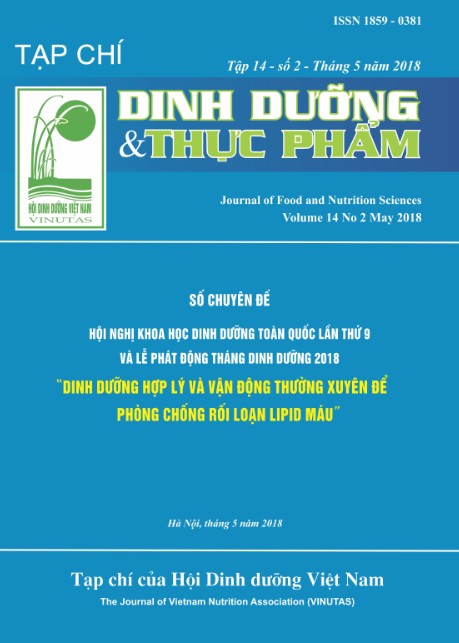INVESTIGATION ON NOROVIRUS CONTAMNATION IN CLAM IN HANOI MARKET IN 2016
Main Article Content
Abstract
Norovirus is the leading cause of acute gastroenteritis worldwide. The principal route
of Norovirus infection is through consumption of foods, mainly bivalve mollusks. In Vietnam,
clam (Meretrix meretrix) is the most commonly cultivated bivalve mollusks with
high export volume and revenue. However, data on Norovirus contamination of clam in
Vietnam is currently unavailable. Therefore, this study aimed at investigating the prevalence
of Norovirus contamination in clam marketed in Hanoi. From March to December
2016, 30 clam samples were collected at one local market and two supermarkets, and analyzed
for the presence of Norovirus in accordance with ISO/TS 15216-1:2013. The results
showed that 13/30 samples were positive for Norovirus GI with contamination level up
to 1.1 x 104 genome copies/g while 27/30 samples were positive for Norovirus GII with
the highest contamination level of 3.4 x 104 genome copies/g. In addition, all Norovirus
GI positive samples were also positive for Norovirus GII. Norovirus contamination in
clam occured year round with a peak between June and September. Contamination level
was greater in the local market compared to supermarkets. This study suggested that
Norovirus GII could be used as a marker for Norovirus detection in clam and revealed
the high prevalence of Norovirus in clam marketed in Hanoi.
Keywords
Norovirus, food safety, clam\, Meretrix meretrix, Real-time RT-PCR
Article Details
Similar Articles
- Lê Thị Hợp, Bùi Thị Thanh Hoa, Từ Ngữ, Cao Phi Nga, Nguyễn Cảnh Phú, Lều Nguyệt Ánh, Nguyễn Quỳnh Vân, Hà Thị Phương, TẦN SUẤT TIÊU THỤ THỰC PHẨM VÀ KHẨU PHẦN ĂN CỦA HỌC SINH TIỂU HỌC TẠI 2 HUYỆN NGHĨA ĐÀN, YÊN THÀNH VÀ THÀNH PHỐ VINH, TỈNH NGHỆ AN NĂM 2019 , Vietnam Journal of Nutrition & Food: Vol. 16 No. 2 (2020)
You may also start an advanced similarity search for this article.


